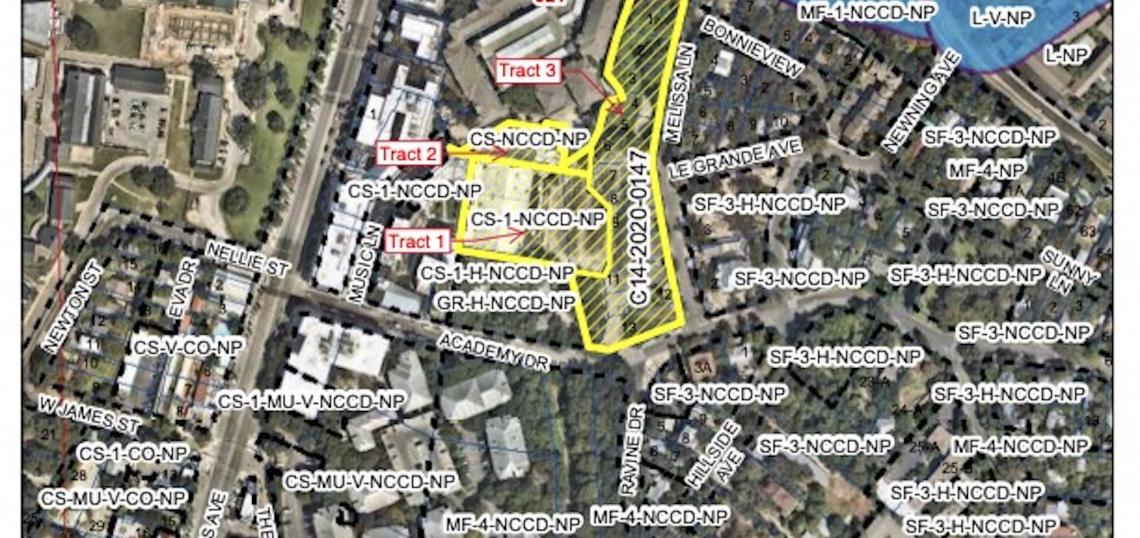A proposal to revive a music venue that closed in 1992 to anchor a mixed-use development off South Congress Avenue is headed for a City Council vote. On Tuesday, October 12, the city’s Planning Commission voted to recommend rezoning the site, which includes the former home of the Austin Opry House at 200 Academy Drive.
Development plans include a revival of the once renowned venue (though exactly what form the “revival” will take hasn’t been completely spelled out), along with redevelopment of the 4.6 acres it sits on, with offices, retail space, 100 units of multifamily housing, and a public park. Plans also include restoring the 17,500-square-foot former Austin Opry House (also variously known as “Austin Opera House” and “Texas Opry House,” the latter when it was the ballroom for the Terrace Motel) as a music venue and museum. The former Opry House complex and parking lot currently occupy the site, located behind the Music Lane retail and restaurant complex, which includes the Hotel Magdelena, and bordered on the south by Hotel Saint Cecilia.
The redevelopment would encompass three separate tracts, all of which will need zoning changes for the plan to proceed. In addition, a Neighborhood Conservation Combining District overlay adopted in 2005 with the intent of protecting and preserving the single-family neighborhood next to the tracts must be removed from part of the property to allow the kinds of uses and structures the developer seeks. The Fairview Park NCCD, which was approved decades after the music venue was built, restricts new construction and requires building compatibility where it transitions into the existing neighborhood.
Nostalgia for the former music venue runs deep. Past owners include Willie Nelson and legendary promoter Tim O’Connor, while over time the former motel around it became the site of equally storied residences, rehearsal spaces, and recording studios (Arlyn Studios still operates there, along with several offices, including some where the old Opry House main room stage was). Some speakers at the Planning Commission envisioned a revival of the kind of musical performance space that Austin bases some of its origin stories on, often trotted out in support of the city’s “Live Music Capital of the World” slogan.
Neighborhood opposition to the redevelopment, however, is vociferous if not unanimous. Some homeowners in the adjacent neighborhood who lived there when the Opry House was open say they opposed it then and that it was never appropriate for the area. In addition to noise, trash left by show attendees, and parking issues, some also maintain that the increased traffic the 1,200-person venue brings will be greater than the city’s study indicates.
Prospective developers could not have asked for a better applicant to represent them than Richard Weiss of Weiss Architecture, which has designed a number of Austin’s treasured newer landmarks—many of which are repurposed historic buildings—including several Alamo Drafthouse locations, Midnight Cowboy, and restaurant-bars such as Komé and the Highball.
In addition to advocating for the cultural importance of reanimating an important live music space, Weiss spoke to neighbors’ concerns, pointing out such design features as a path that would lead pedestrians to South Congress and public transit stops, the addition of 900 parking spaces and an underground garage, and the four-story multifamily project to be built between the music venue and the existing neighborhood.
Commissioners ultimately chose to recommend that council approve the rezoning, although the case will come back to them for other decisions, such as venue size limits, if the zoning changes go through. The matter goes to the City Council next, although a date for that hearing is not yet set.






